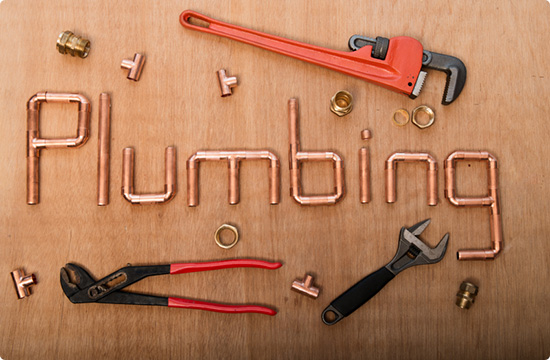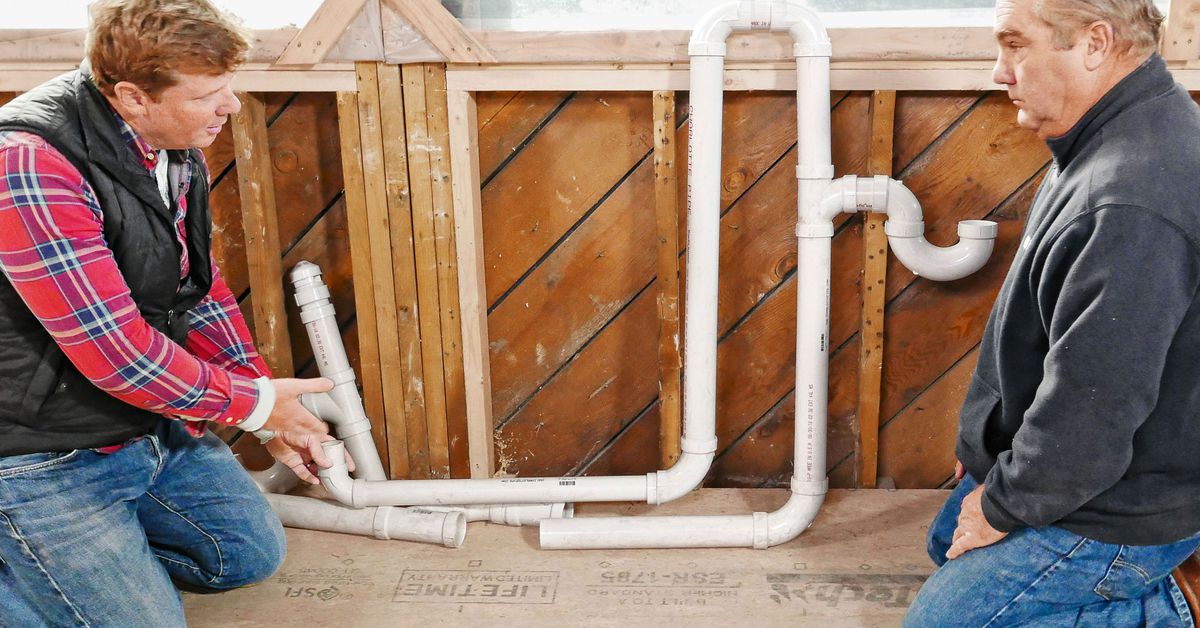Why is My Home Making Strange Plumbing Sounds?
Click HereWhat are your opinions on Why Do My Plumbing Pipes Make A Knocking Noise?

To identify noisy plumbing, it is important to establish very first whether the unwanted sounds take place on the system's inlet side-in various other words, when water is turned on-or on the drainpipe side. Sounds on the inlet side have differed causes: extreme water pressure, used shutoff as well as faucet components, incorrectly linked pumps or other devices, improperly positioned pipeline fasteners, and also plumbing runs consisting of a lot of tight bends or various other limitations. Sounds on the drain side usually come from poor place or, as with some inlet side sound, a design containing limited bends.
Hissing
Hissing noise that occurs when a tap is opened slightly usually signals extreme water pressure. Consult your neighborhood water company if you suspect this issue; it will be able to inform you the water pressure in your location as well as can install a pressurereducing shutoff on the incoming water system pipeline if necessary.
Thudding
Thudding sound, frequently accompanied by shivering pipes, when a tap or appliance shutoff is turned off is a condition called water hammer. The sound and resonance are caused by the resounding wave of pressure in the water, which instantly has no area to go. In some cases opening up a valve that releases water promptly into a section of piping consisting of a restriction, joint, or tee fitting can produce the exact same condition.
Water hammer can normally be cured by mounting fittings called air chambers or shock absorbers in the plumbing to which the issue valves or taps are attached. These devices enable the shock wave created by the halted flow of water to dissipate in the air they have, which (unlike water) is compressible.
Older plumbing systems may have short upright sections of capped pipe behind wall surfaces on tap competes the same objective; these can eventually fill with water, minimizing or destroying their efficiency. The remedy is to drain pipes the water system totally by shutting down the main supply of water shutoff and also opening up all taps. Then open the major supply valve as well as shut the taps individually, beginning with the faucet nearest the shutoff as well as finishing with the one farthest away.
Chattering or Shrieking
Intense chattering or shrieking that takes place when a shutoff or tap is turned on, and that normally goes away when the fitting is opened fully, signals loose or faulty internal parts. The option is to change the shutoff or tap with a brand-new one.
Pumps and appliances such as cleaning machines and also dishwashers can transfer motor noise to pipes if they are incorrectly linked. Link such products to plumbing with plastic or rubber hoses-never stiff pipe-to isolate them.
Various Other Inlet Side Noises
Squeaking, squealing, damaging, breaking, and also tapping normally are triggered by the growth or tightening of pipelines, normally copper ones providing warm water. The noises happen as the pipelines slide versus loosened bolts or strike close-by home framing. You can often pinpoint the location of the problem if the pipes are exposed; simply comply with the noise when the pipelines are making sounds. Probably you will uncover a loosened pipe hanger or a location where pipelines lie so close to flooring joists or various other framing pieces that they clatter versus them. Connecting foam pipe insulation around the pipelines at the point of get in touch with ought to remedy the trouble. Make sure straps and hangers are secure as well as provide ample assistance. Where possible, pipeline bolts ought to be attached to large structural components such as structure walls as opposed to to framing; doing so lessens the transmission of vibrations from plumbing to surfaces that can magnify as well as move them. If connecting fasteners to framework is inevitable, wrap pipes with insulation or various other resistant material where they speak to fasteners, and sandwich completions of new bolts between rubber washing machines when installing them.
Dealing with plumbing runs that struggle with flow-restricting limited or numerous bends is a last resource that needs to be carried out just after seeking advice from an experienced plumbing specialist. Unfortunately, this circumstance is rather usual in older houses that might not have been developed with interior plumbing or that have seen numerous remodels, especially by beginners.
Drainpipe Noise
On the drainpipe side of plumbing, the chief objectives are to remove surfaces that can be struck by dropping or rushing water and to protect pipelines to include inescapable sounds.
In new building and construction, bathtubs, shower stalls, commodes, and wallmounted sinks as well as containers should be set on or versus resistant underlayments to reduce the transmission of noise via them. Water-saving toilets as well as taps are much less noisy than traditional versions; mount them instead of older types even if codes in your area still allow making use of older fixtures.
Drainpipes that do not run up and down to the cellar or that branch into straight pipe runs supported at flooring joists or various other framing present especially frustrating sound problems. Such pipes are big sufficient to emit considerable vibration; they likewise lug considerable quantities of water, that makes the situation worse. In new building, define cast-iron dirt pipes (the big pipelines that drain pipes commodes) if you can afford them. Their massiveness includes much of the sound made by water travelling through them. Additionally, stay clear of routing drainpipes in walls shown bed rooms as well as rooms where people gather. Walls consisting of drains must be soundproofed as was defined previously, utilizing double panels of sound-insulating fiberboard as well as wallboard. Pipes themselves can be wrapped with special fiberglass insulation produced the function; such pipelines have an invulnerable plastic skin (often including lead). Results are not always acceptable.
3 Most Common Reasons for Noisy Water Pipes
Water hammer
When water is running and is then suddenly turned off, the rushing liquid has no place to go and slams against the shut-off valve. The loud, thudding sound that follows is known as a water hammer. Besides being alarming, water hammer can potentially damage joints and connections in the water pipe itself. There are two primary methods of addressing this issue.
Check your air chamber. An air chamber is essentially a vertical pipe located near your faucet, often in the wall cavity that holds the plumbing connected to your sink or tub. The chamber is filled with air that compresses and absorbs the shock of the fast moving water when it suddenly stops. Unfortunately, over time air chambers tend to fill with water and lose their effectiveness. To replenish the air chambers in your house you can do the following. Turn off the water supply to your house at the main supply (or street level). Open your faucets to drain all of the water from your plumbing system. Turn the water back on. The incoming water will flush the air out of the pipes but not out of the vertical air chamber, where the air supply has been restored. Copper pipes
Copper pipes tend to expand as hot water passes through and transfers some of its heat to them. (Copper is both malleable and ductile.) In tight quarters, copper hot-water lines can expand and then noisily rub against your home's hidden structural features — studs, joists, support brackets, etc. — as it contracts.
One possible solution to this problem is to slightly lower the temperature setting on your hot water heater. In all but the most extreme cases, expanding and contracting copper pipes will not spring a leak. Unless you’re remodeling, there's no reason to remove sheetrock and insert foam padding around your copper pipes.
Water pressure that’s too high
If your water pressure is too high, it can also cause noisy water pipes. Worse, high water pressure can damage water-supplied appliances, such as your washing machine and dishwasher.
Most modern homes are equipped with a pressure regulator that's mounted where the water supply enters the house. If your home lacks a regulator, consider having one professionally installed. Finally, remember that most plumbers recommend that water is delivered throughout your home at no lower than 40 and no greater than 80 psi (pounds per square inch).
Whatever the state of your plumbing, one thing is certain — you’re eventually going to encounter repair and replacement issues around your home that require professional help. That’s where American Home Shield can come to your aid.
https://www.ahs.com/home-matters/repair-maintenance/causes-of-noisy-water-pipes/

As a passionate person who reads on How To Fix Noisy Pipes, I thought sharing that article post was worthwhile. Liked our review? Please share it. Let someone else find it. Thank you so much for going through it.
Get Offer